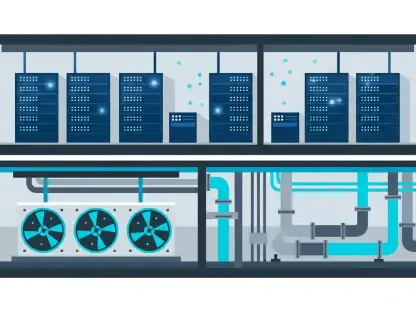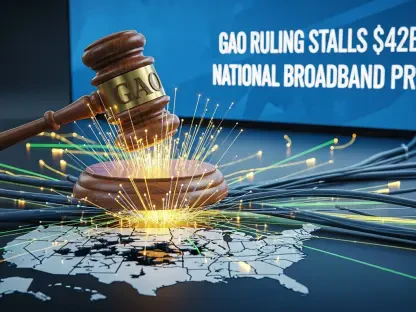In the rapidly evolving world of telecommunications, industry mergers often spark heated debates over potential impacts on consumers and competition. A significant merger that recently reshaped the landscape is between Charter Communications and Cox Communications. This union, which integrates Charter’s cable television service under the Spectrum brand while retaining the name Cox Communications, positions the company as America’s largest cable broadband provider. The merger’s main promise lies in leveraging economies of scale, which could generate substantial benefits for consumers through enhanced service quality and affordability. As companies seek larger customer bases to spread infrastructure costs, this merger offers an intriguing case study in how consolidation can drive technological advancement and competitive pricing.
Leveraging Economies of Scale
Infrastructure Investment and Innovation
The merger of Charter and Cox Communications illustrates the power of economies of scale in fostering innovation within the broadband industry. By integrating resources, the new Cox Communications can offset infrastructure costs across its vast customer base, enabling it to undertake significant upgrades. One of the most notable advancements is the adoption of DOCSIS 4.0 technology. This cutting-edge technology promises to deliver gigabit speeds, low latency, and considerably improved security features. Enabled by these innovations, consumers can expect faster and more reliable internet services, enhancing everyday connectivity experiences. By spreading the financial responsibility of these technological improvements across millions of customers, the company can ensure that these advancements are sustainable without dramatically raising prices. In this new digital age, the capacity to implement such sophisticated infrastructure upgrades is vital for maintaining a competitive edge.
Operating Cost Reductions
Alongside investments in infrastructure, the merger enables significant reductions in operating costs, projected to be up to $500 million over the initial three years following the merger. These savings emerge from streamlined operations and the elimination of redundant costs previously incurred by maintaining separate operations for Charter and Cox. These efficiency gains translate into potential savings for customers, as companies can offer high-quality broadband services at competitive prices. The passage of cost benefits back to consumers exemplifies the merger’s commitment to affordability without compromising service quality. In practical terms, cost reductions permit more robust service delivery, contributing to enhanced broadband experiences for all subscribers. With decreased operational expenses, Cox Communications can allocate resources more effectively, channeling investments into customer-centric developments, thus maintaining market relevance.
Challenging Competition Concerns
Market Dynamics and Competition
The merger between Charter and Cox Communications refutes the conventional criticism that telecom mergers inherently suppress competition. Instead, the merger reflects an industry landscape where cable providers face increasing competition from fiber, satellite, and fixed wireless services. This convergence challenges companies to continuously innovate and optimize offerings to retain and grow market share. In this competitive environment, mergers can lead to fewer, yet stronger competitors capable of sustaining high-performance service and competitive pricing. By restructuring into a more formidable entity, Cox Communications can better navigate this fiercely competitive market, ensuring customers receive stable, high-quality broadband services in an ever-changing industry landscape. This underscores the necessity of strategic responses to competitive pressures, prioritizing investment in customer satisfaction as a tool for maintaining advantage.
Regulatory Perspectives
The discourse around mergers often includes concerns about regulation and the perceived notion of “big-is-bad.” However, the merger between these two giants of telecommunications challenges such assumptions, arguing for its benefits in fostering technological progress and market stability. Regulatory bodies frequently express apprehension regarding potential market monopolization, yet the prevailing industry consensus suggests that the merger’s benefits outweigh these concerns. Critics of regulatory interference argue that obstructing mergers based solely on company size might hinder innovation and advancement in the sector. This viewpoint highlights the importance of considering broad market dynamics and competition levels before imposing restrictions, ensuring that regulatory frameworks do not stifle progress in the telecommunications space. The merger, thus, emerges as a case study in balancing size and innovation, advocating for a broader perspective on regulatory implications and consumer benefits.
Future of Consumer Broadband
Consumer Benefits of Enhanced Services
As Cox Communications embarks on a new chapter post-merger, the consensus remains that consumer benefits are front and center of its strategies. The merger created the catalyst for delivering high-speed internet at competitively priced rates, well-positioned to meet the increasing demands of consumers seeking enhanced services. With DOCSIS 4.0 technology as a cornerstone of its offering, customers can anticipate unprecedented speed, reliability, and security in their broadband connections. Additionally, the reduced operational costs spell potential savings for consumers, as the company passes these benefits along through more affordable pricing structures. At a time when connectivity is paramount, the emphasis on consumer benefits promises to redefine expectations, presenting robust internet service capabilities tailored to today’s digital needs.
Technological and Competitive Growth
The successful Cox-Charter merger stands as a testament to the transformative power of strategic growth through consolidation. It presented an opportunity for capitalizing on the technological convergence of different broadband solutions to offer wide-ranging service improvements. As companies strive to deliver remarkable consumer experiences amidst intense competition, the merger’s significance extends beyond immediate gains. Strategic partnerships like this one set the stage for future growth and innovation, enabling companies to adapt to changing market demands while staying competitive in price and service quality. As Cox Communications continues to evolve with its expanded reach and capabilities, it underscores the pivotal role that well-executed mergers can play in shaping a dynamic, consumer-focused broadband landscape. The merger ultimately reaffirms the importance of foresight and strategic planning in navigating the challenges and opportunities of the broadband industry.









